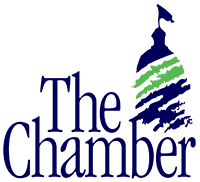Events Upcoming
New Members
Sexual harassment remains a problem in many workplaces despite years of mandatory training for supervisors to prevent it. Getting in front of the problem in the truest sense requires raising accountability and an awareness of inclusion and respect in the workplace.
That, however, requires full-scale culture change, which is not something that can be taught in one or two hours via videos, rules and definitions. Training like that may be a good start for ensuring a minimum understanding of a company's policies, reporting requirements and caveats surrounding retaliation, but it likely won't effectuate real cultural change; that can come only when front-line managers companywide assume full responsibility for ensuring a friendly and inclusive work environment by modeling friendliness and inclusion. Launching such a program starts by discussing the effects of inappropriate conduct and how one change in everyone's approach can make a better working experience for all.
"This is much more than investigating incidents and employee complaints after the fact and taking appropriate disciplinary action," said Ursula Kienbaum, shareholder and
employment attorney with Ogletree Deakins in Portland, Ore. "It's about getting in front of the problem so that it never rears its ugly head in the first place."
Absolute success is likely impossible, but supervisors' words, actions and behavior will influence employees more than they imagine. How can you, as a corporate leader, ensure that harassment doesn't plague your workplace? The answer lies in transparent communication and expectations that are set appropriately.
"Although there are no guarantees, approaching the topic openly with intermittent reminders can do a lot to make this a 'front-burner' issue, thereby either eliminating the problem or at least mitigating its negative effects, both in terms of culture and legal liability," Kienbaum said.
More Than Training 101
Building a harassment-free workplace is not about watching additional training videos or drafting knowledge-based solutions. Instead, it's all about heart: respect, inclusion, selfless leadership and the sense that colleagues have each other's backs should the need arise. The proactive group solution builds co-workers' emotional intelligence. While raising people's awareness of how they come across to others is sometimes challenging, it's a valuable exercise that proffers real-life lessons that will likely stand the test of time.
The Leadership Script
Here's how your opening statement to your department or team might sound:
"Folks, I called this meeting to discuss a topic that's of concern to all of us: sexual harassment. Now, don't roll your eyes. I'm serious about this. Nothing defines us more as a team than the way we treat and respect one another. I'm holding this meeting not because I have to, but because I want to. The scope and tone of our interpersonal relationships is key to our getting along. I want you to know that I always have your backs, but certain behaviors and forms of conduct cross the line, and the consequences can be swift and severe.
"First, sexual harassment falls under our company's anti-discrimination policy. Further, our code of conduct sets the standard for how we're expected to treat one another in terms of both the letter and the spirit of the law. There are real consequences for people accused and found guilty of violating this particular policy, including disciplinary action or even outright termination for an egregious first offense. In other words, the policy has teeth, and the company is willing to enforce it and won't turn a blind eye.
"Next, keeping this defense strategy in mind, it's even more important that we discuss our offense strategy. What do I and what should you expect a healthy workplace to look like? We need to make sure we have a high enough level of trust in and respect for one another that we can assume good intentions when faced with challenges. I expect you all to practice selfless leadership in putting other's needs ahead of your own. I want our group to be the team that pays it forward, supports each other, and fosters a sense of appreciation and gratitude for working here. Finally, when in doubt, err on the side of compassion—we're all trying our best. That's the team I'd like to see us become, and that's the model you might want to consider when you manage teams of your own throughout your career."
Kay Lynn Gabaldon, consulting head of talent acquisition and people operations at Mojio in Palo Alto, Calif., said, "Gain your employees' commitment by acknowledging and sharing positive, authentic experiences. Commend those who demonstrate role-model behavior, and make conduct just as important as performance in your employee evaluations. Continual public acknowledgment of positive experiences acts as a foundational teaching tool that will help prevent employees from straying off the golden path. But it's got to be your priority: You need to set the bar. Demonstrate role-model leadership principles, and teach your employees how to develop strong leadership practices of their own so this becomes the norm."
You set the role-model behavior for others to follow and demonstrate how this works by your actions. Be willing to apologize first when there's any doubt about intentions or actions, praise in public and censure in private, make light of misunderstandings and inject a sense of humor in the day-to-day. That's the team your staffers will want to work with and for. That's the behavior that will be honored and rewarded across your department.
You'll be moving the needle in a new direction—what an important message from the top and a critical admission of who you are, what you believe in and how you expect others to act when challenged by the various issues that surface in the workplace. You'll be off to a great start in making it safer for your employees to do their best work every day while simultaneously helping them, individually and as a team, to reach their full potential.
This article courtesy of the Society for Human Resource Management (SHRM).
